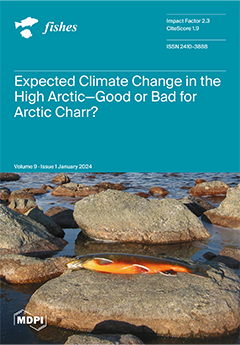Due to overfishing and marine pollution, the status of fishery resources and the ecological environment in the sea areas have considerably changed. The proliferation and release of fishery resources have become the main means of human intervention to maintain and conserve the resource populations. The annual output of
Sepiella japonica (
S. japonica), once one of the four major seafood species in the East China Sea, has now recovered to a level of 4000 t. However, do the traditional spawning grounds of
S. japonica still exist? Have the spawning grounds shifted? These scientific questions are worthy of attention. Based on the survey data of fishery resources and environment at 120 stations in coastal Zhejiang waters from 2015 to 2022, the spatial and temporal distribution and resource center of gravity of
S. japonica in springtime were analyzed. Random forest (RF) was used to explain the importance of six environmental variables, including water depth, sea surface temperature, sea surface salinity, chlorophyll a, pH, and dissolved oxygen. The generalized additive model (GAM) nonparametric smoothing function was used to analyze the relationship between environmental factors and the distribution of
S. japonica inhabiting the offshore areas of Zhejiang province, and the effects of environmental factors on spawning habitat selection of
S. japonica were revealed. This study found that there was a significant interannual variation in
S. japonica resources, with an overall increasing trend in the resource. The spawning grounds were mainly distributed in the Jiushan Islands Marine Reserve, the Dachen Islands Marine Reserve, and their nearby sea areas. The resource peaked at latitude 28.3° N. Additionally, the most important variables affecting the distribution of
S. japonica were depth of water, followed by sea surface salinity, pH, dissolved oxygen, sea surface temperature, and chlorophyll a.
S. japonica mainly inhabited sea areas with a depth of 15~25 m and a sea surface salinity of 26~32. When the pH ranged from 7.6 to 8.3, dissolved oxygen ranged from 6 to 9 mg/L, sea surface temperature ranged from 14 to 17 °C, and chlorophyll a ranged from 2.5 to 5 µg/L,
S. japonica was more likely to be present. This study provides insights into the spatial distribution of
S. japonica in offshore Zhejiang province, offering a reference for the rational utilization and scientific protection of this resource.
Full article





